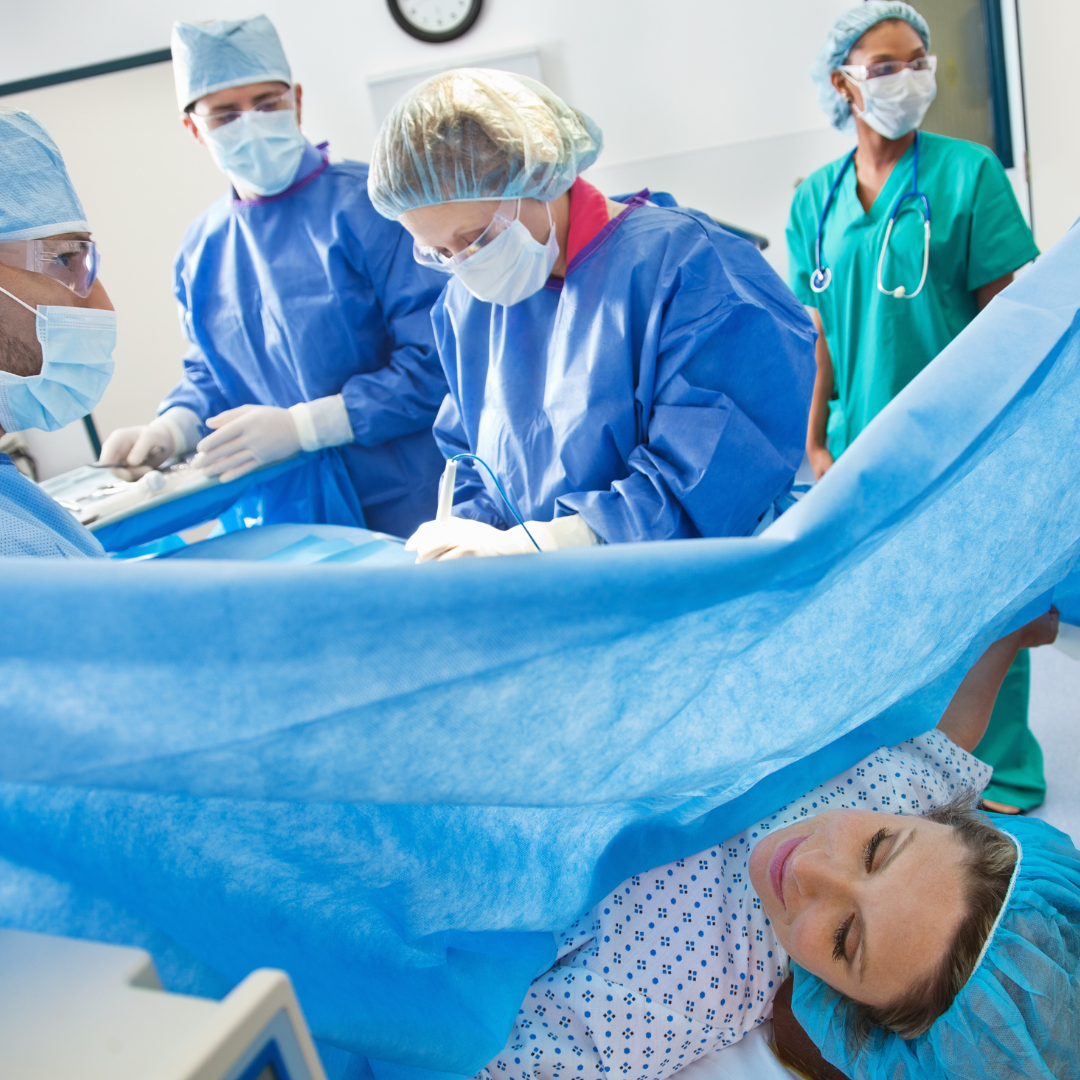


So where does Caesarean Awareness Month come from?
This is an event organised by ICAN – The International Cesarean Awareness Network. ICAN is a non-profit organisation whose mission is to improve maternal-child health by reducing preventable cesareans through education, supporting cesarean recovery, and advocating for vaginal birth after cesarean (VBAC).
(Source: ICAN website)
Approximately 1 in 3 babies are born abdominally in the UK, in some trusts it’s 1 in 2 in April 2024. The majority of those births are unplanned scenarios. Yet, much of the antenatal education available to parents does not include information about this type of birth.
We believe this is because of the huge taboo that is still attached to caesarean abdominal births and the lack of understanding of what’s actually involved. In many peoples minds, it’s a medical procedure so we should just let the medical professionals do what they need to do, right? Wrong! This is still a form of birth and there are lots of incredibly important factors for parents to consider, just as they would for a vaginal birth.
It’s become apparent that even if people do want to learn about it, it’s very difficult for them to find educational and helpful information to prepare themselves. Educational content is what is needed to empower parents to make decisions about their birth- whether it be planning for a physiological birth and then consenting to an abdominal birth at any point, or planning for an abdominal birth as their first preference.
To quote the NICE guidelines (the organisation that provides evidence based guidelines to our health services), NICE recommends that maternity health care professionals should:
– Offer all pregnant women information and support to enable them to make informed decisions about childbirth. Make sure that:
– The information is evidence based
– Any information provided is accessible, ideally with a choice of formats to suit different women’s needs
– The language used in any information (written or oral) is respectful and suitable for the woman, taking into account any personal, cultural or religious factors that could form part of the woman’s choices
– The woman’s or birthing person’s preferences and concerns are central to the decision-making process. [2004, amended 2021]
You can read the full NICE Guideance for caesarean birth here.
The reality is, we do not all receive the level of individual and evidence based information we need to make an informed decision about abdominal birth, and from our experience and observations of supporting parents, the parents’ preferences and concerns are not always central to the decision making process.
So how can you educate yourself to make informed decisions about abdominal birth, no matter what your birth preference is? Here are our recommended resources:
We also recommend reading these 2 short books whether you are planning a vaginal or caesarean birth:

Sleep & Rest in Pregnancy: Building Habits for Better Energy Throughout Your Pregnancy and Into Postnatal Recovery

Questioning your ‘why’ as a new parent returning to work, and helping you to find tools to support you along the way.

Whichever kind of birth is your preference, it's always a good idea to understand what recovering from a caesarean abdominal birth ( c-section) entails and how you can support the process.